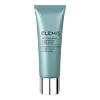What's inside
What's inside
 Key Ingredients
Key Ingredients

No key ingredients
 Benefits
Benefits

 Concerns
Concerns

 Ingredients Side-by-side
Ingredients Side-by-side

Water
Skin ConditioningGlycerin
HumectantHydrolyzed Soy Protein
HumectantBambusa Arundinacea Stem Extract
Skin ConditioningPEG-40 Hydrogenated Castor Oil
EmulsifyingPentylene Glycol
Skin ConditioningHydrolyzed Cottonseed Protein
Skin ConditioningCitrus Medica Limonum Fruit Extract
Skin ConditioningPlantago Major Leaf Extract
Skin ConditioningKrameria Triandra Root Extract
Skin ConditioningLavandula Angustifolia Oil
MaskingLitsea Cubeba Fruit Oil
MaskingCarbomer
Emulsion StabilisingButylene Glycol
HumectantSodium Hydroxide
BufferingCitric Acid
BufferingDisodium EDTA
Phenoxyethanol
PreservativeSorbic Acid
PreservativePotassium Sorbate
PreservativeCitral
PerfumingLinalool
PerfumingLimonene
PerfumingWater, Glycerin, Hydrolyzed Soy Protein, Bambusa Arundinacea Stem Extract, PEG-40 Hydrogenated Castor Oil, Pentylene Glycol, Hydrolyzed Cottonseed Protein, Citrus Medica Limonum Fruit Extract, Plantago Major Leaf Extract, Krameria Triandra Root Extract, Lavandula Angustifolia Oil, Litsea Cubeba Fruit Oil, Carbomer, Butylene Glycol, Sodium Hydroxide, Citric Acid, Disodium EDTA, Phenoxyethanol, Sorbic Acid, Potassium Sorbate, Citral, Linalool, Limonene
Glycerin
HumectantCaprylic/Capric Triglyceride
MaskingPrunus Amygdalus Dulcis Oil
Skin ConditioningMicrocrystalline Cellulose
AbsorbentSambucus Nigra Oil
MaskingWater
Skin ConditioningPolyglyceryl-4 Laurate
EmulsifyingAvena Sativa Kernel Oil
Skin ConditioningTriticum Vulgare Germ Oil
EmollientPolyglyceryl-2 Stearate
EmulsifyingPolyglyceryl-6 Laurate
EmulsifyingLavandula Angustifolia Oil
MaskingGlyceryl Stearate
EmollientStearyl Alcohol
EmollientBorago Officinalis Seed Oil
EmollientLinalool
PerfumingLavandula Hybrida Oil
EmollientPelargonium Graveolens Flower Oil
MaskingEucalyptus Globulus Leaf Oil
PerfumingGeraniol
PerfumingTocopherol
AntioxidantAnthemis Nobilis Flower Oil
MaskingHippophae Rhamnoides Fruit Oil
Skin ProtectingCocoyl Hydrolyzed Collagen
CleansingCinnamomum Camphora Bark Oil
MaskingLimonene
PerfumingMentha Arvensis Leaf Oil
MaskingAcacia Decurrens Flower Wax
EmollientRosa Multiflora Flower Wax
Skin ConditioningSimmondsia Chinensis Seed Oil
EmollientCitrus Aurantium Dulcis Oil
MaskingParfum
MaskingVitis Vinifera Seed Oil
EmollientHelianthus Annuus Seed Oil
EmollientMenthol
MaskingEugenia Caryophyllus Leaf Oil
MaskingPadina Pavonica Thallus Extract
Skin ConditioningGlycerin, Caprylic/Capric Triglyceride, Prunus Amygdalus Dulcis Oil, Microcrystalline Cellulose, Sambucus Nigra Oil, Water, Polyglyceryl-4 Laurate, Avena Sativa Kernel Oil, Triticum Vulgare Germ Oil, Polyglyceryl-2 Stearate, Polyglyceryl-6 Laurate, Lavandula Angustifolia Oil, Glyceryl Stearate, Stearyl Alcohol, Borago Officinalis Seed Oil, Linalool, Lavandula Hybrida Oil, Pelargonium Graveolens Flower Oil, Eucalyptus Globulus Leaf Oil, Geraniol, Tocopherol, Anthemis Nobilis Flower Oil, Hippophae Rhamnoides Fruit Oil, Cocoyl Hydrolyzed Collagen, Cinnamomum Camphora Bark Oil, Limonene, Mentha Arvensis Leaf Oil, Acacia Decurrens Flower Wax, Rosa Multiflora Flower Wax, Simmondsia Chinensis Seed Oil, Citrus Aurantium Dulcis Oil, Parfum, Vitis Vinifera Seed Oil, Helianthus Annuus Seed Oil, Menthol, Eugenia Caryophyllus Leaf Oil, Padina Pavonica Thallus Extract
Ingredients Explained
These ingredients are found in both products.
Ingredients higher up in an ingredient list are typically present in a larger amount.
Glycerin is already naturally found in your skin. It helps moisturize and protect your skin.
A study from 2016 found glycerin to be more effective as a humectant than AHAs and hyaluronic acid.
As a humectant, it helps the skin stay hydrated by pulling moisture to your skin. The low molecular weight of glycerin allows it to pull moisture into the deeper layers of your skin.
Hydrated skin improves your skin barrier; Your skin barrier helps protect against irritants and bacteria.
Glycerin has also been found to have antimicrobial and antiviral properties. Due to these properties, glycerin is often used in wound and burn treatments.
In cosmetics, glycerin is usually derived from plants such as soybean or palm. However, it can also be sourced from animals, such as tallow or animal fat.
This ingredient is organic, colorless, odorless, and non-toxic.
Glycerin is the name for this ingredient in American English. British English uses Glycerol/Glycerine.
Learn more about GlycerinLavandula Angustifolia Oil is more commonly known as lavender essential oil. It is considered a fragrancing ingredient.
Lavender imparts a famous scent. While the smell is lovely, this ingredient and may sensitize skin in topical products. This is because about 85% of the oil is made up of linalool and linalyl acetate.
When exposed to air, these two compounds become strong allergens. This ingredient exhibits cytotoxicity at low concentrations; amounts of 0.25% have been shown to damage skin cells.
A study from Japan found this ingredient caused lavender sensitivity after widespread exposure.
Lavender essential oil has some antimicrobial, antibacterial, and anti-inflammatory properties. However, the cons of this ingredient may outweight the pros.
More research is needed to confirm lavender essential oil's effects when used in aromatherapy.
Lavandula Angustifolia is known as the English Lavender and famous for creating purple fields in Provence, France.
Learn more about Lavandula Angustifolia OilLimonene is a fragrance that adds scent and taste to a formulation.
It's found in the peel oil of citrus fruits and other plants such as lavender and eucalyptus. The scent of limonene is generally described as "sweet citrus".
Limonene acts as an antioxidant, meaning it helps neutralize free radicals.
When exposed to air, oxidized limonene may sensitize the skin. Because of this, limonene is often avoided by people with sensitive skin.
The term 'fragrance' is not regulated in many countries. In many cases, it is up to the brand to define this term. For instance, many brands choose to label themselves as "fragrance-free" because they are not using synthetic fragrances. However, their products may still contain ingredients such as essential oils that are considered a fragrance.
Learn more about LimoneneLinalool is a fragrance and helps add scent to products. It's derived from common plants such as cinnamon, mint, citrus, and lavender.
Like Limonene, this ingredient oxidizes when exposed to air. Oxidized linalool can cause allergies and skin sensitivity.
This ingredient has a scent that is floral, spicy tropical, and citrus-like.
Learn more about LinaloolWater. It's the most common cosmetic ingredient of all. You'll usually see it at the top of ingredient lists, meaning that it makes up the largest part of the product.
So why is it so popular? Water most often acts as a solvent - this means that it helps dissolve other ingredients into the formulation.
You'll also recognize water as that liquid we all need to stay alive. If you see this, drink a glass of water. Stay hydrated!
Learn more about Water